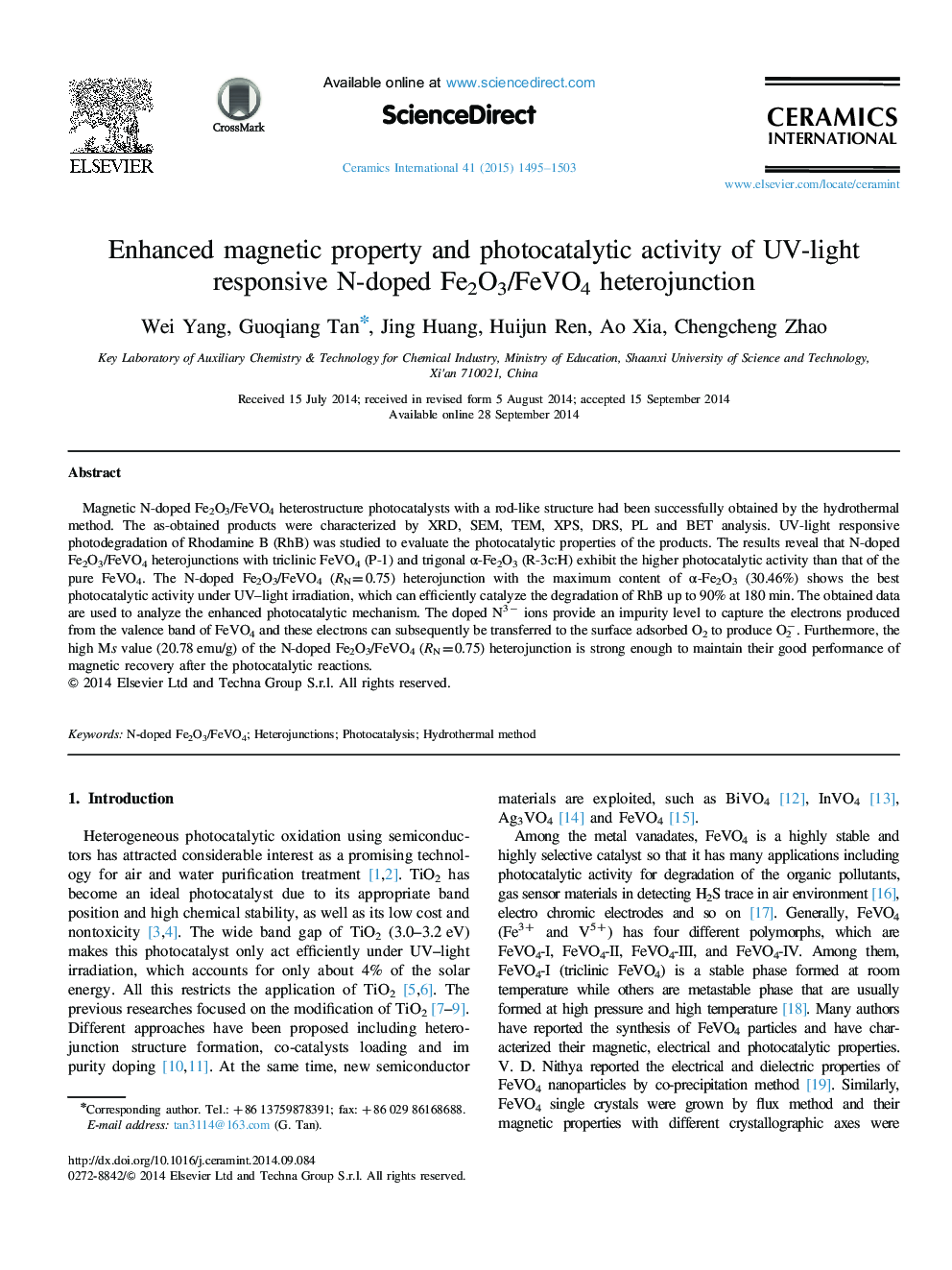| Article ID | Journal | Published Year | Pages | File Type |
|---|---|---|---|---|
| 1460851 | Ceramics International | 2015 | 9 Pages |
Magnetic N-doped Fe2O3/FeVO4 heterostructure photocatalysts with a rod-like structure had been successfully obtained by the hydrothermal method. The as-obtained products were characterized by XRD, SEM, TEM, XPS, DRS, PL and BET analysis. UV-light responsive photodegradation of Rhodamine B (RhB) was studied to evaluate the photocatalytic properties of the products. The results reveal that N-doped Fe2O3/FeVO4 heterojunctions with triclinic FeVO4 (P-1) and trigonal α-Fe2O3 (R-3c:H) exhibit the higher photocatalytic activity than that of the pure FeVO4. The N-doped Fe2O3/FeVO4 (RN=0.75) heterojunction with the maximum content of α-Fe2O3 (30.46%) shows the best photocatalytic activity under UV–light irradiation, which can efficiently catalyze the degradation of RhB up to 90% at 180 min. The obtained data are used to analyze the enhanced photocatalytic mechanism. The doped N3− ions provide an impurity level to capture the electrons produced from the valence band of FeVO4 and these electrons can subsequently be transferred to the surface adsorbed O2 to produce O2−. Furthermore, the high Ms value (20.78 emu/g) of the N-doped Fe2O3/FeVO4 (RN=0.75) heterojunction is strong enough to maintain their good performance of magnetic recovery after the photocatalytic reactions.
